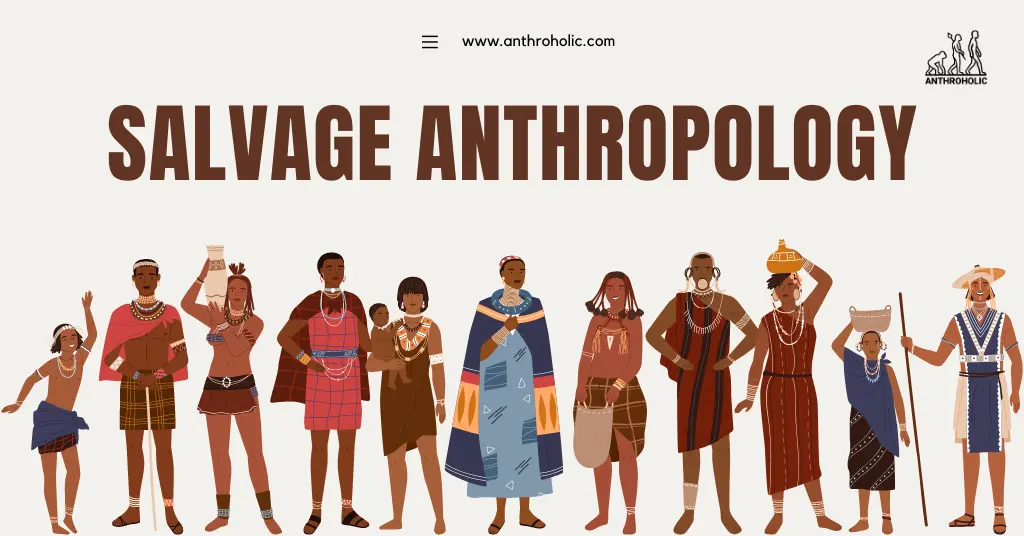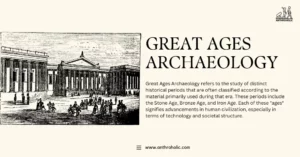AI Answer Evaluation Platform Live Now. Try Free Answer Evaluation Now
Salvage Anthropology
Salvage anthropology, often associated with Franz Boas in the late 19th and early 20th centuries, reflects an urgent quest to document indigenous cultures and languages perceived as on the verge of extinction due to Western expansion and industrialization. This methodological approach, built upon an ideology of preserving disappearing cultures, underpins much of the discipline’s history and raises important ethical considerations about the anthropology field itself [1].

Historical Background
Early Practice
The advent of salvage anthropology coincided with the burgeoning field of anthropology itself in the late 1800s, primarily in North America. The era was characterized by unprecedented expansion and colonization by European settlers, perceived to be the root cause of indigenous cultures’ gradual extinction [2]. Hence, anthropologists felt a compulsion to ‘salvage’ or ‘rescue’ these cultures by documenting them.
The Boasian Influence
Franz Boas, a pioneer in modern anthropology, was one of the most influential figures in salvage anthropology. He sought to collect and document various cultural aspects such as oral histories, languages, myths, customs, and material culture from Native American groups, fearing their imminent disappearance [3]. His work significantly shaped the discipline, emphasizing the importance of cultural relativism and historical context in understanding cultures [4].
Methodology and Process
The methodological approach of salvage anthropology involved:
- Extensive Fieldwork: Anthropologists conducted extensive fieldwork, often living with indigenous groups, to understand and document their cultures.
- Documentation: The cultures were documented in their entirety, including their social structures, belief systems, languages, art, and material culture.
- Archiving: The collected data was archived for future study and reference.
Critiques and Controversies
Despite its historical significance, salvage anthropology has been subject to criticism, primarily revolving around:
- Objectification: Critics argue that it objectified indigenous cultures, treating them as subjects to be studied and catalogued, rather than as living, evolving societies.
- Eurocentrism: The premise of salvage anthropology—that Westernization was causing the ‘disappearance’ of indigenous cultures—has been critiqued for its Eurocentric bias.
- Loss of Context: The act of ‘salvaging’ often stripped cultural artefacts of their context, reducing their significance to mere objects.
| Critiques | Implications |
|---|---|
| Objectification | Treating cultures as objects for study rather than living societies |
| Eurocentrism | Western-centric bias in observing cultural changes |
| Loss of Context | Reduction of cultural artefacts to mere objects, neglecting context |
Evolution and Current Perspectives
Despite the criticism, salvage anthropology significantly shaped modern anthropological practices. It emphasized the importance of fieldwork and documentation, although the approach has evolved to incorporate:
- Ethical considerations: Modern anthropology acknowledges indigenous cultures as living, changing entities and emphasizes their rights and autonomy.
- Collaborative research: Researchers increasingly engage with indigenous communities as collaborators rather than merely subjects of study.
- Contextual understanding: Today’s anthropology values the historical and socio-cultural contexts in which the cultural practices exist.
Conclusion
Salvage anthropology has been a critical component of the anthropological field, helping document and preserve countless indigenous cultures. While criticized for its objectifying and Eurocentric approach, it laid the groundwork for the modern anthropology practice, which is becoming increasingly inclusive, collaborative, and respectful of cultural contexts.
References
[1] Clifford, James (1988). “The Predicament of Culture: Twentieth-Century Ethnography, Literature, and Art”. Harvard University Press.
[2] Hinsley, Curtis M. (1981). “Savages and Scientists: The Smithsonian and the American Indian”. Smithsonian Institution Press.
[3] Stocking, George W. (1968). “Race, Culture, and Evolution: Essays in the History of Anthropology”. The Free Press.
[4] Boas, Franz (1887). “Museums of Ethnology and their classification”. Science.




